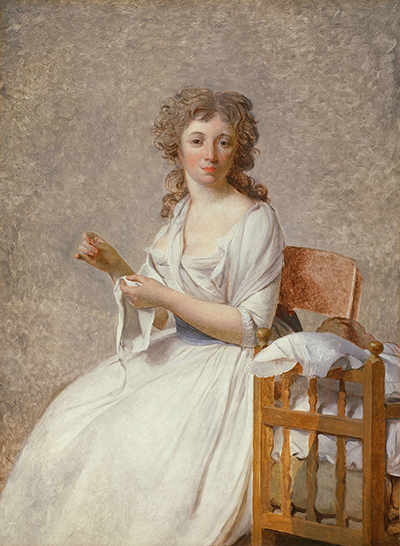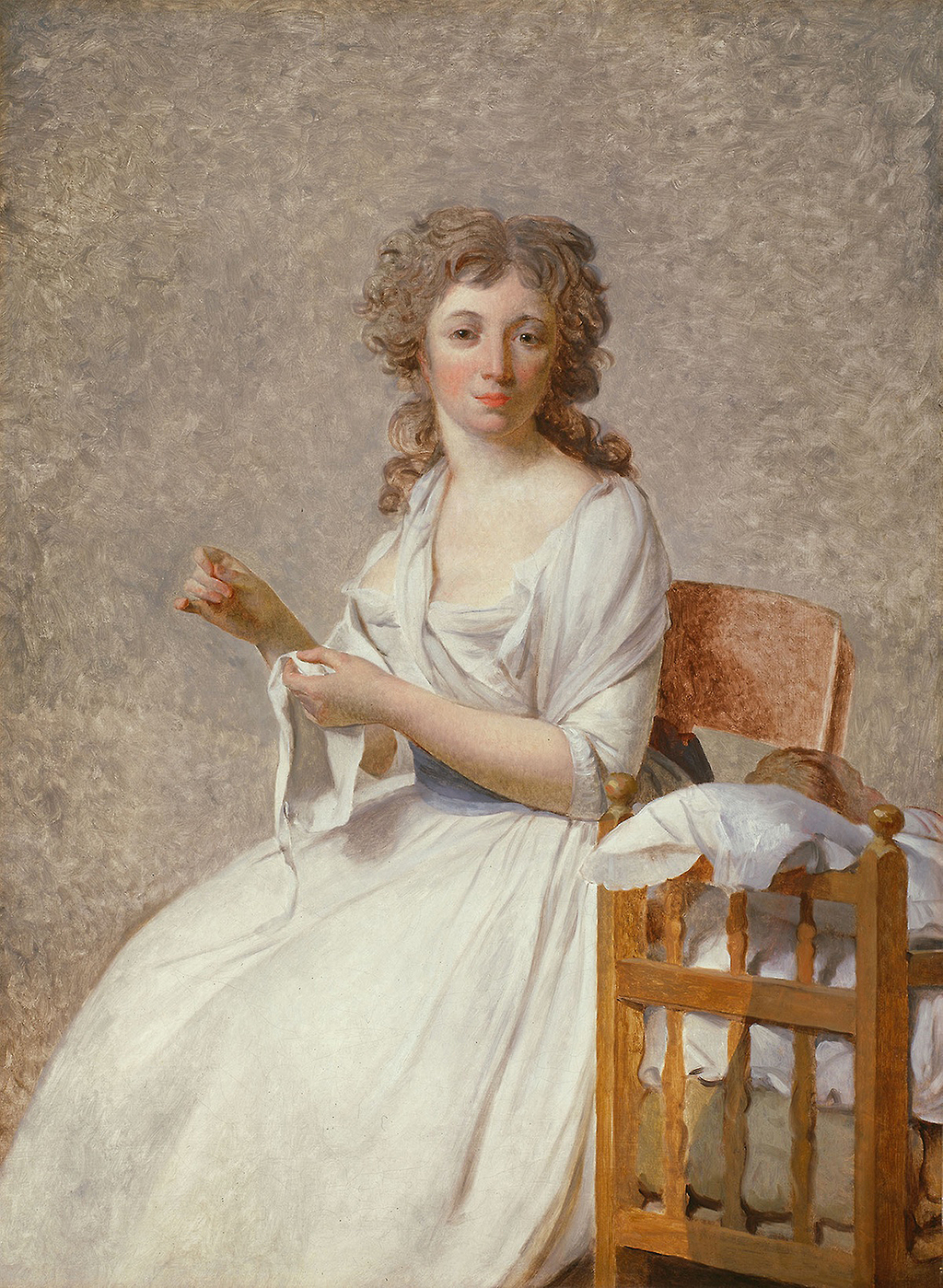This charming, but unfinished, portrait was worked on by Jacques Louis David in 1791/92. It remains a part of the collection of the Art Institute of Chicago, US.
Examining the fingers of the mother in this painting, and seeing where a needle and thread should be, but aren't, one can immediately recognise that this artwork was never completed. Anyone familiar with the work of Jacques Louis David will see that the refined finishes have not been added here, although there is still much to see and appreciate about the work that has been done. All of the detail is essentially there, as we find a young mother staring at the viewer whilst repairing an item of her young boy's clothing. She sports a classical dress with well kept hair and makeup, in a style perhaps more tidy and well presented than many young mothers are able to achieve. Her boy lies next to her in a wooden cot. The background behind them is left rough and unrefined.
An interesting sidepoint to this artwork is that Madame de Pastoret, who is the female captured in this painting, as well as her husband, were keen royalists, which placed them in direct opposition to the artist's own political views. It would later become known that because of this she was nolonger willing to accept the painting once it was finished. However, she did instruct the son in this piece to then purchase it for the family once the artist had passed away, by which time he was clearly much older. So, it was as if she always liked the work but allowed politics to get in the way of initially accepting it. David's own revolutionary beliefs and those with whom he aligned himself would later get him into deep water, and ultimately exiled to Brussels for the final decade of his life.
It is important to remember that even a lady such as this, who would later become known as Marquise de Pastoret in 1817, was still seen in very much a domestic setting, and as a mother. For many centuries women were simply seen in this way within art as a reflection of their role in society. The other ways in which they might be used were as dream-like goddesses, representing ancient tales. It would only be later that female models would enjoy a more varied role in European art, and we would even start to see female artists recognised for the first time, such as Mary Cassatt and Berthe Morisot within the impressionist movement. Despite the political differences, artist David would always be kind and flattering to the women in his portraits and he does so again here, indicating this woman to be hard working, caring and responsible.





